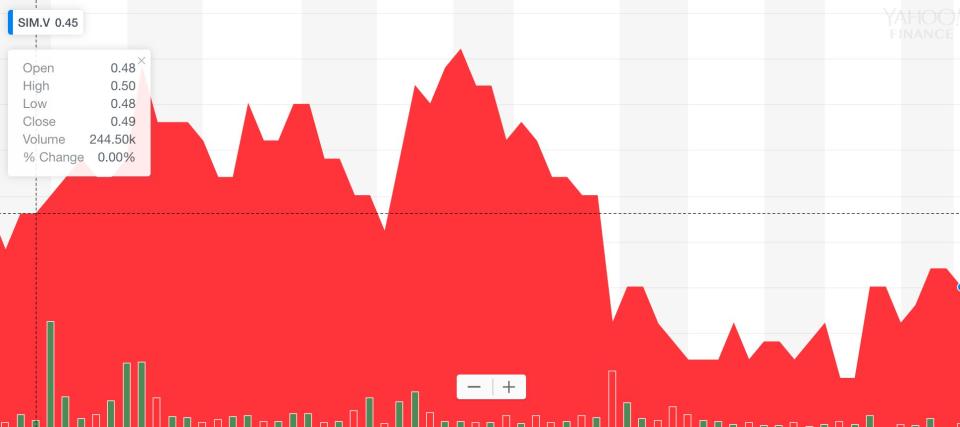Canadian smartphone-maker Siyata Mobile sees billions in U.S. market

A Canadian cellular company focused on enterprise, vehicle-based technology has high hopes for a newly-launched device on a major U.S. telecom network. And no, it’s not BlackBerry Ltd. (BB.TO)
Siyata Mobile Inc.’s (SIM.V) TSX Venture-listed shares have been lifted by anticipation for the company’s push-to-talk device for first responders and fleet vehicles debuting on AT&T Inc.’s (T) network. They’ve also been weighed upon by lacklustre financial results.
Chairman and chief executive Marc Seelenfreund expects Tuesday’s launch of the UV350 4G/LTE In-Vehicle Smartphone in the U.S. will “transform” the small Montreal-based firm as it takes aim at a market the company pegs at US$13 billion.
“You’ve got a little Canadian micro cap company that’s working with one of the largest carriers in the world,” he told Yahoo Finance Canada. “We think that we’re in a very, very unique position that is rare to see in the industry.”
Seelenfreund said Siyata filled a void left in the wake of Google’s (GOOG) short-lived ownership of Motorola beginning in 2012, before the company was acquired by Lenovo in 2014.
“Until that time, if you wanted a device for blue-collar workers or for a truck or police car, you would go to Motorola,” Seelenfreund said. “Google wanted to focus on the consumer market. Basically, the enterprise side of the business was shut down.”
Siyata sells the UV350 as a solution to redundant hardware, a $1,000 all-in-one vehicle-mounted smartphone that eliminates the need for separate navigation, phone, fleet management, and land mobile radio components. The Android-powered, push-to-talk cellular device with a 5.5-inch display is designed for commercial trucks and buses, as well as police, fire and ambulance vehicles.
Siyata estimates an addressable market of about 10 million commercial vehicles and over three million first responder vehicles in North America.
Seelenfreund said the company’s older 3G-based devices are in about 250,000 vehicles outside of North America. Mainly in Israel, where the company does research and development.
Siyata launched the UV350 on Bell’s (BCE.TO) LTE network in late October, and has announced intentions to work with an addition tier-one U.S. carrier.
“In other words, we’re not exclusive to AT&T and we plan to launch with another very large cellular carrier in the United States,” Seelenfreund said.
He explains the company has stuck somewhat of a Goldilocks balance in the market for commercial and first-responder vehicle communication; big enough that smaller rivals would struggle to compete, yet too small and niche for large manufacturers to notice.
“Samsung and Apple and LG don’t sell a few hundred thousand units of anything,” Seelenfreund said. “For us, if we’re selling a few hundred thousand a year, that would be a home run for us. It would mean hundreds of millions of dollars in sales. We would be ecstatic, and our investors would be ecstatic.”

 Yahoo Finance
Yahoo Finance 


